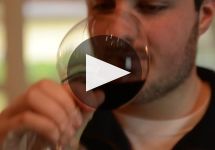Sandrone Valmaggiore Nebbiolo d'Alba 2006
-
Robert
Parker


Product Details
Your Rating
Somm Note
Winemaker Notes
The alternation of hot and cold periods characterized the vegetative cycle of 2006. Heat in May and June was very strong, but from August onwards the situation changed. August 2006 was the coldest in 5 years, with marked differences between day and night temperatures and, thankfully, some rainfall. By mid-September there were perfect harvest conditions. Harvest took place from the September 28 to October 6.
After delicate maceration in steel, the wine was transferred into 500L French oak barrels, which had already been used once, to avoid the risk of overpowering the wine's aromatic quality. Ageing took place 12 months in the same wood and 9 months in the bottle.
Professional Ratings
-
Robert Parker's Wine Advocate
The 2006 Nebbiolo d’Alba Valmaggiore is made from a vineyard in the emerging Roero district. It is an especially generous Nebbiolo in this vintage. Perfumed aromatics meld into super-ripe red cherries, spices, flowers and toasted oak. The wine offers outstanding depth and richness in a full-bodied, racy style. Anticipated maturity: 2008-2016.
This is a very strong set of entry-level wines from Luciano Sandrone, one of Piedmont’s top growers. In a region full of outspoken, colorful producers, Sandrone remains soft-spoken and rather shy, but his wines speak for themselves rather eloquently.
Other Vintages
2021-
Wine
Enthusiast -
James
Suckling -
Wine
Spectator
-
Robert
Parker
-
Robert
Parker -
Wine
Spectator
-
Robert
Parker -
Wine &
Spirits -
Wine
Spectator -
Wine
Enthusiast -
James
Suckling
-
Robert
Parker -
James
Suckling -
Wine
Spectator
-
Robert
Parker -
James
Suckling -
Wine
Spectator -
Wine &
Spirits
-
Robert
Parker -
Wine &
Spirits -
Wine
Spectator
-
Robert
Parker

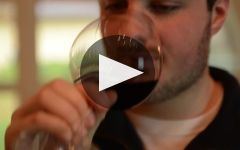
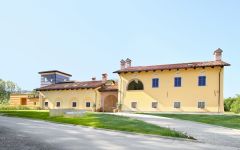

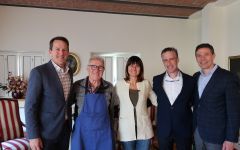
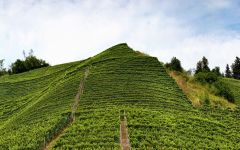
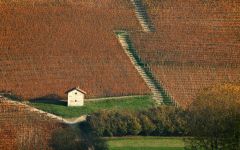
Luciano Sandrone is one of the most iconic producers in Barolo, and his is both a well known and extraordinary story. He started to learn viticulture at the age of 14 or 15, and after years of work as a cellarman he depleted his life savings and purchased his first vineyard on the Cannubi hill in 1977, though he could only manage his land on the weekends while he continued to work. He made his first vintage in 1978, in the garage of his parents, and then spent years refining his ideas about how to make a wine of distinction and utmost quality that respected the traditions of Barolo while incorporating new ideas and understanding about viticulture and vinification. He made every vintage until 1999 at home, until the winery he constructed in 1998 was ready for use.
Sandrone's wines are sometimes described as straddling the modern and traditional styles in the region: elegant, attractive and easy to appreciate right from their first years in bottle, but with no less power and structure than traditional Barolos. Along with the extremely low yields in the vineyard and an obsessive attention to training, pruning and harvesting, Sandrone has a very rational approach in the cellar. This approach, however, is also unique and outside of simple classification: Sandrone subjects his wines to medium-length maceration period, shorter than traditional, but makes limited use of new oak in the maturation process, which takes place in 500 liter tonneaux, all signs of a more traditional approach in the cellar. The entire range of wines, all limited in production, are jewels of impeccably balanced concentration and precision, and the ability to age for long periods of time.

Responsible for some of the most elegant and age-worthy wines in the world, Nebbiolo, named for the ubiquitous autumnal fog (called nebbia in Italian), is the star variety of northern Italy’s Piedmont region. Grown throughout the area, as well as in the neighboring Valle d’Aosta and Valtellina, it reaches its highest potential in the Piedmontese villages of Barolo, Barbaresco and Roero. Outside of Italy, growers are still very much in the experimentation stage but some success has been achieved in parts of California. Somm Secret—If you’re new to Nebbiolo, start with a charming, wallet-friendly, early-drinking Langhe Nebbiolo or Nebbiolo d'Alba.

An historic village situated right in between the famous regions of Barolo and Barbaresco, Alba is also the name for the larger wine region surrounding the village.
In a sense, “Alba” is a catch-all phrase, and includes the declassified Nebbiolo wines made in Barolo and Barbaresco, as well as the Nebbiolo grown just outside of these regions’ borders. In fact, Nebbiolo d’Alba is a softer, less tannic and more fruit-forward wine ready to drink within just a couple years of bottling. It is a great place to start if you want to begin to understand the grape. Likewise, the even broader category of Langhe Nebbiolo offers approachable and value-driven options as well.
Barbera, planted alongside Nebbiolo in the surrounding hills, and referred to as Barbera d’Alba, takes on a more powerful and concentrated personality compared to its counterparts in Asti.
Dolcetto is ubiquitous here and, known as Dolcetto d'Alba, can be found casually served alongside antipasti on the tables of Alba’s cafes and wine bars.
Not surprisingly, given its location, Alba is recognized as one of Italy’s premiere culinary destinations and is the home of the fall truffle fair, which attracts visitors from worldwide every year.
